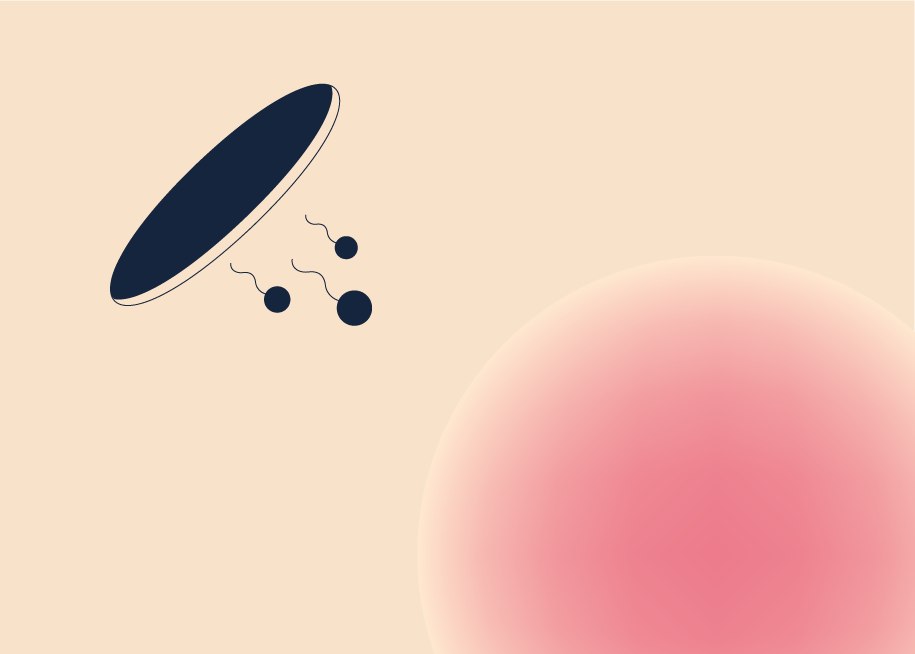Do you know when your last period was? Or how long it lasted? And how it felt compared to the period before? Perhaps not, but you are definitely not alone.
Understanding your menstrual cycle can not only help you determine your monthly fertile window (helpful if you follow a natural birth control method or if you are trying to conceive) but also give you an insight into your general health and wellbeing. In fact your menstrual cycle can be considered a natural barometer for your overall wellness.
Here we will discuss what is considered a normal menstrual cycle, what can lead to irregularities and how you can track yours.
Understanding your menstrual cycle
Your menstrual cycle is the monthly process your body goes through in order to prepare for pregnancy. It begins on the first day of your period and ends at the onset of your next menstrual bleed.
Your menstrual cycle is regulated by a complex interplay of hormones including oestrogen and progesterone, which are released from the ovaries, and follicle stimulating hormone (FSH) and luteinising hormone (LH), secreted from the pituitary gland.
The menstrual cycle is generally considered as two phases(1):
The follicular phase begins on the first day of your period and ends on the day you ovulate. It is characterised by the selection and development of a dominant ovarian follicle (fluid filled sacs that contain the eggs) under the influence of FSH. During the follicular phase, the uterine lining rebuilds and thickens in response to estrogen produced by the developing follicle.
The onset of the luteal phase begins at ovulation when a mature egg is released in response to a spike in LH levels. Progesterone levels rise after ovulation, further preparing the uterine lining for implantation. In the absence of fertilisation, estrogen and progesterone levels drop triggering the shedding of the uterine lining, also known as menstruation.
Changes in your menstrual cycle are caused by fluctuations in the naturally occurring hormone patterns that drive your cycle.
What is a typical menstrual cycle?
Menstrual cycles vary considerably and no two individuals will experience the same. In fact, as an individual you will likely not even experience the same cycle month by month..
While it is hard to define a normal menstrual cycle, recent guidelines suggest that a typical cycle for an adult who is not using any form of hormonal contraception can be between 24 and 38 days in length (2). Variations in menstrual cycle length are normal and differences of up to nine days between your shortest and longest cycles are still considered within the regular range (3). Through an understanding of your own body you can become accustomed to what the normal variations are for you.
The length of your period, heaviness of your flow and the symptoms you experience can also fluctuate between cycles. In general, periods that last eight days or less are considered within the typical range (3).
It is important to remember that the ranges given for a normal menstrual cycle are not applicable to everyone.
The menstrual cycles in the first few years after menarche (the first menstrual period) can vary greatly but most cycles range from 21 - 45 days (4,5). As you progress through adolescence your cycle will begin to shorten, eventually following a pattern more reflective of the adult range.
Varying cycles are also commonly experienced in the years leading up to menopause (perimenopause) (5) as well as in the initial few cycles following childbirth and after stopping breastfeeding.
Why does my cycle vary?
Changes in your menstrual cycle are caused by fluctuations in the naturally occurring hormone patterns that drive your cycle.
A number of factors can underlie these changes. Perhaps you have noticed that increases in stress levels (6), how much you sleep (7) or even changes in how much you eat or exercise (8) impact your cycle. Medical conditions such as polycystic ovarian syndrome (PCOS) (9) can also affect the menstrual cycle.
Any differences that you may observe in the length of your cycle generally affect the follicular phase which, as we touched on earlier, is the stage prior to ovulation. The follicular phase can range from 10 to 22 days. In contrast the luteal phase is generally more constant, lasting around 14 days, but between 11 to 17 (10, 11) days is common.
How can I track my menstrual cycle?
Keeping a record of the length of your cycle, the number of days your menstrual bleeding lasts, the heaviness of your flow and any pain during your period, as well as any bleeding that occurs between periods, will help you establish what is normal for you.
If your cycle is consistently falling outside these common limits, we would advise to discuss any concerns you have with your doctor. It could mean that the levels and naturally occurring fluctuations in your hormones are not following the normal pattern.
This is important when you consider that your hormones are also much more than just regulators of reproductive function. Atypical hormone levels can impact bone density (13), metabolism, the cardiovascular system (14) as well as mental health (15).
Tracking hormones is another way of developing a better awareness of your cycle. With the inne minilab you can take a simple saliva test to detect changes in your progesterone levels. This will help you identify the onset of your luteal phase and confirm ovulation has taken place.
References
1. Reed, B. G. & Carr, B. R. The normal menstrual cycle and the control of ovulation. in Endotext (eds. De Groot, L. J., Chrousos, G. & Dungan, K., 2015)
2. Fraser, I. S., Critchley, H. O. D., Broder, M. & Munro, M. G. The FIGO recommendations on terminologies and definitions for normal and abnormal uterine bleeding., Semin Reprod Med. 29, 2011, pages383 - 390
3. Munro, M. G., Critchley, H. O. D. & Fraser, I. S. Research and clinical management for women with abnormal uterine bleeding in the reproductive years: more than PALM-COEIN. BJOG. 124, 2017, pages 185 - 189
4. Hickey, M. & Balen, A. Menstrual disorders in adolescence: investigation and management. Hum Reprod Update. 9, 2003, 493 - 504
5. Chiazze, L., Brayer, F. T., Macisco, J. J., Parker, M. P. & Duffy, B. J. The length and variability of the human menstrual cycle. J. Am. Med. Assoc. 203, 1968, pages 377–380
6. Fenster, L. et al. Psychological stress in the workplace and menstrual function. Am J Epidemiol. 149, 1999, pages 127 - 134
7. Baker, F. C. & Driver, H. S. Circadian rhythms, sleep, and the menstrual cycle. Sleep Med. 6, 2007, pages 613 - 622
8. Gibson, M. E. S., Fleming, N., Zuijdwijk, C. & Dumont, T. Where Have the Periods Gone? The Evaluation and Management of Functional Hypothalamic Amenorrhea. J Clin Res Pediatr Endocrinol. 12, 2020, pages 18-27
9. Escobar-Morreale, H. Polycystic ovary syndrome: definition, aetiology, diagnosis and treatment. Nat Rev Endocrinol. 14, 2018, 270–284
10. Crawford, Natalie M et al. “Prospective evaluation of luteal phase length and natural fertility.” Fertility and sterility vol. 107,3, 2017, pages 749-755.
11. Mesen, Tolga B, and Steven L Young. “Progesterone and the luteal phase: a requisite to reproduction.” Obstetrics and gynecology clinics of North America vol. 42,1, 2015, pages135-51
12. Fehring, R. J., Schneider, M. & Raviele, K. Variability in the phases of the menstrual cycle. J. Obstet. Gynecol. Neonatal Nurs. 35, 2006, pages 376–384
13. Ouyang, F. et al. Menstrual cycle lengths and bone mineral density: a cross-sectional, population-based study in rural Chinese women ages 30 - 49 years. Osteoporos Int. 18, 2007, pages 221 - 233
14. Solomon, C. G. et al. Menstrual cycle irregularity and risk for future cardiovascular disease. J Clin Endocrinol Metab. 87, 2002, pages 2013 - 2017
15. Shuster, L. T., Rhodes, D.J., Gostout, B. S., Grossardt, B.R. & Rocca, W. A. Premature menopause or early menopause: long-term health consequences. Maturitas 65, 2010, pages 161-166








